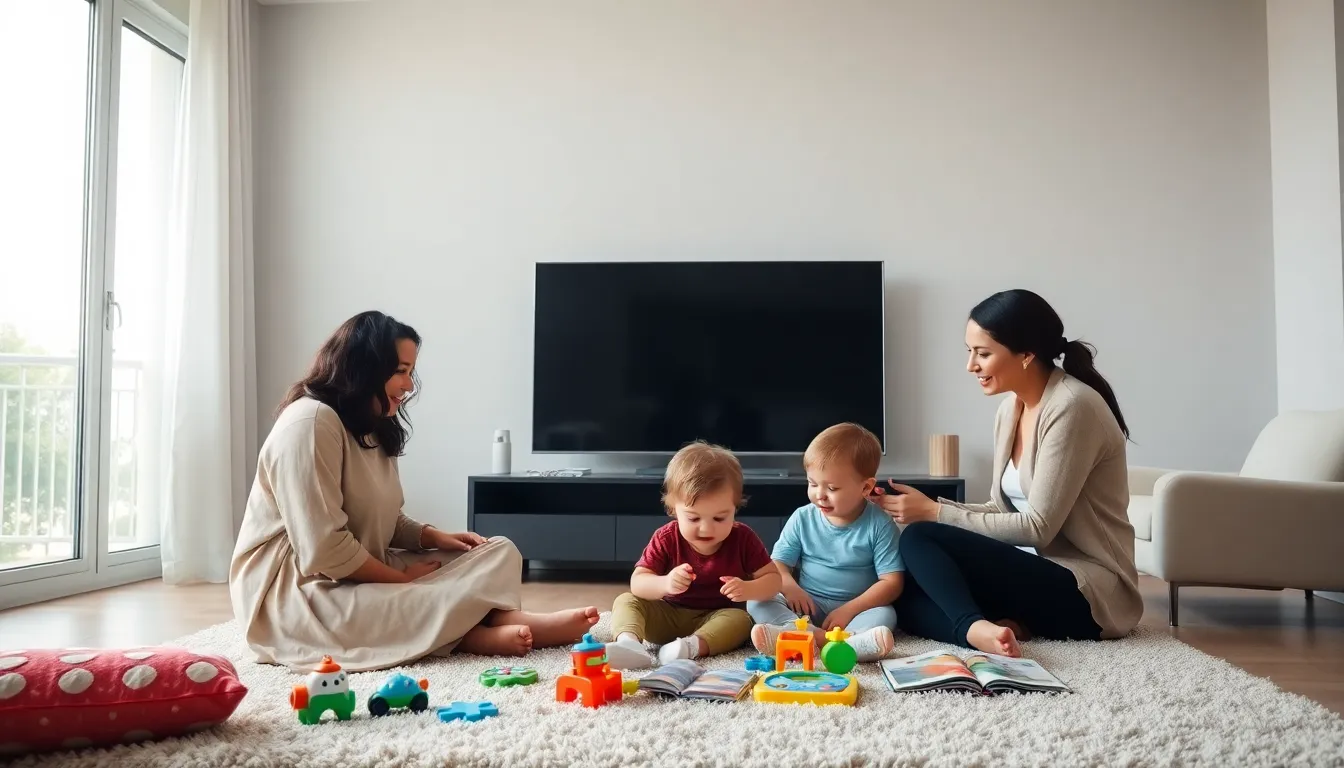Every parent has experienced those moments of sheer desperation. The baby is crying, dinner needs cooking, and the only thing that seems to work magically is that shiny tablet or TV screen. But as a wise friend once said, “What goes on behind that screen can be just as concerning as what happens off of it.” In a world increasingly revolving around screens, many parents are left wondering: is screen time bad for babies? Let’s dive deep into this topic, armed with knowledge and perhaps a sprinkle of humor, to uncover what you really need to know.
Table of Contents
ToggleUnderstanding Screen Time Guidelines

The American Academy of Pediatrics (AAP) offers guidelines that can help parents navigate this modern conundrum. For children under 18 months, they recommend avoiding screen use altogether, except for video chatting. For toddlers aged 18 to 24 months, if parents choose to introduce digital media, it’s wise to opt for high-quality programming and watch it together to help decode the content. As children grow, limited screen time becomes a bit more permissible, but meaningful engagement is key. In any case, parents must remember that personal interactions remain the cornerstone of a child’s development.
The Developmental Impact of Screen Use
Children’s brains develop rapidly during their early years, and every interaction contributes to this growth. Screen time can have both positive and negative effects. Studies have shown that excessive screen use might hinder aspects of child’s development such as language acquisition and social skills. These skills blossom from face-to-face interactions. When babies and toddlers screen gaze instead of engaging with caregivers, vital opportunities for learning language and social cues evaporate. Still, educational programs can sometimes aid in teaching shapes or colors if paired with adult involvement, making it a balancing act.
Potential Risks Associated With Screen Time
The allure of screens is undeniable, but it comes with risks that parents must weigh carefully. A significant concern is the effect of blue light emitted from devices, which can disrupt sleep patterns. Sleep is crucial for a baby’s growth and development. Also, excessive screen time has been connected to obesity due to sedentary behavior. Believe it or not, binge-watching cartoons is not an Olympic sport. Another risk lies in the content itself. Exposure to inappropriate material can have unintentional consequences, shaping perceptions in ways that parents may not intend.
Benefits of Limited Screen Time
Even though the potential pitfalls, screen time isn’t all doom and gloom. Limited, high-quality screen time can enhance learning in various ways. For instance, educational programs designed for young children often incorporate interactive elements, making learning engaging. Also, screens can serve as tools for connection. The pandemic taught many families to treasure moments spent communicating via video calls, ensuring relationships flourish even from afar. When used mindfully, screens can promote creativity and even instigate exciting family discussions around the content viewed.
Tips for Healthy Screen Time Habits
Navigating screen time can feel like tightrope walking. Here are some tips to help parents foster healthy habits: First, establish screen-free zones, especially during meals and bedtime. This helps encourage family bonding and ensures children prioritize sleep. Secondly, choose age-appropriate content. Quality matters significantly: programs that involve problem-solving or education can be beneficial. Third, engage with your child. Discuss what they see on screen and relate it to their everyday experiences. Finally, most importantly, model healthy behavior. If adults lead by example, children are more likely to adopt similar habits.

